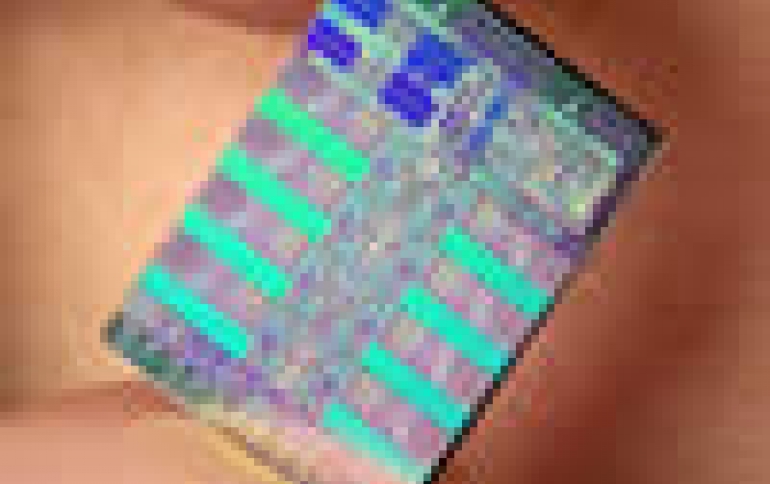
Computer Chips Become Smaller Than First Thought
Researchers at IBM have discovered that current chip-making technology has the potential to make computer processors even tinier and cheaper than was first thought.
IBM scientists that released the findings at a technology conference in the Silicon Valley city of San Jose on Monday said the industry had a reprieve from the predicted need to switch to more costly, unproven chip-making methods.
The commonly-used process of optical lithography has the potential to make chip circuitry more than a third as narrow as is standard in electronics today, according to IBM.
"This means higher density memory or higher memory capacity in a smaller package. The chip people can go either way," said an IBM spokesman.
It will be up to chip producers to invest in developing the potential uncovered by IBM scientists, according to the company.
"Our goal is to push optical lithography as far as we can so the industry does not have to move to any expensive alternatives until absolutely necessary," said Robert Allen, a manager at IBMs Almaden Research Center in San Jose.
"This result is the strongest evidence to date that the industry may have at least seven years of breathing room before any radical changes in chip-making techniques would be needed."
The discovery that computer gear can be smaller, cheaper, and higher capacity than once thought came amid a worldwide technology push toward more versatile and compact handheld devices.
IBM scientists have created the tiniest, high-quality line patterns ever made using deep-ultraviolet optical lithography, a technology currently used to "print" circuits on chips.
The distinct and uniformly spaced ridges are only 29.9 nanometers wide, with a nanometer being a mere billionth of a meter, according to IBM.
This is less than one-third the size of the 90-nanometer features now in mass production and below the 32 nanometers that industry consensus held as the limit for optical lithography techniques, according to the researchers.
For decades, the semiconductor industry has relied on continually shrinking circuits to drive increases in the performance and function of chips and the products that use them, according to industry experts.
As chip features now approach the fundamental scale limits of individual atoms and molecules, the future of this trend of relentless improvement, referred to as Moore's Law, is in jeopardy, IBM scientists said.
IBMs new result indicates that a "high-index immersion" variant of lithography may provide a path for extending Moores Law, buying the industry time.
The commonly-used process of optical lithography has the potential to make chip circuitry more than a third as narrow as is standard in electronics today, according to IBM.
"This means higher density memory or higher memory capacity in a smaller package. The chip people can go either way," said an IBM spokesman.
It will be up to chip producers to invest in developing the potential uncovered by IBM scientists, according to the company.
"Our goal is to push optical lithography as far as we can so the industry does not have to move to any expensive alternatives until absolutely necessary," said Robert Allen, a manager at IBMs Almaden Research Center in San Jose.
"This result is the strongest evidence to date that the industry may have at least seven years of breathing room before any radical changes in chip-making techniques would be needed."
The discovery that computer gear can be smaller, cheaper, and higher capacity than once thought came amid a worldwide technology push toward more versatile and compact handheld devices.
IBM scientists have created the tiniest, high-quality line patterns ever made using deep-ultraviolet optical lithography, a technology currently used to "print" circuits on chips.
The distinct and uniformly spaced ridges are only 29.9 nanometers wide, with a nanometer being a mere billionth of a meter, according to IBM.
This is less than one-third the size of the 90-nanometer features now in mass production and below the 32 nanometers that industry consensus held as the limit for optical lithography techniques, according to the researchers.
For decades, the semiconductor industry has relied on continually shrinking circuits to drive increases in the performance and function of chips and the products that use them, according to industry experts.
As chip features now approach the fundamental scale limits of individual atoms and molecules, the future of this trend of relentless improvement, referred to as Moore's Law, is in jeopardy, IBM scientists said.
IBMs new result indicates that a "high-index immersion" variant of lithography may provide a path for extending Moores Law, buying the industry time.





















